CAA News Today
Meet the Fall 2022 Millard Meiss Publication Fund Grant Recipients
posted by CAA — November 28, 2022
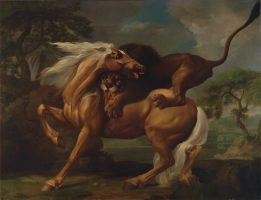
George Stubbs, A Lion Attacking a Horse, Oil on canvas, 1762, Yale Center for British Art, Paul Mellon Collection
MEET THE GRANTEES
Twice a year, CAA awards grants through the Millard Meiss Publication Fund to support book-length scholarly manuscripts in the history of art, visual studies, and related subjects that have been accepted by a publisher on their merits, but cannot be published in the most desirable form without a subsidy.
Thanks to the generous bequest of the late Prof. Millard Meiss, CAA began awarding these publishing grants in 1975.
FALL 2022 GRANTEES
Paloma Checa-Gismero, The Early Biennial Boom and the Making of Global Contemporary Art, Duke University Press
Denva Gallant, Illustrating the Vitae patrum: The Rise of the Eremitic Ideal in Fourteenth Century Italy, Penn State University Press
Katie Hornstein, Myth and Menagerie: Seeing Lions in Nineteenth-Century France, Yale University Press
Sujatha Meegama, Temples to the Buddha and the Gods: The Transnational Drāviḍa Tradition of Architecture in Sri Lanka, University of Hawaii Press
Morgan Ng, The Stratified City: Military Architecture and Urban Experience in Renaissance Italy, Yale University Press
Naomi Pitamber, Byzantium and Landscapes of Loss: The Recreation of Constantinople in the Laskarid and Palaiologan Eras, Cambridge University Press
Finalists for the 2023 Morey and Barr Awards
posted by CAA — November 28, 2022
CAA is pleased to announce the 2023 finalists for the Charles Rufus Morey Book Award and the two Alfred H. Barr Jr. Awards. The winners of the three prizes, along with the recipients of other Awards for Distinction, will be announced in January 2023 and presented during Convocation in conjunction with CAA’s 111th Annual Conference, February 15–18, 2023.
Charles Rufus Morey Book Award Shortlist, 2023
Cécile Fromont, Images on a Mission in Early Modern Kongo and Angola, Pennsylvania State University Press, 2022
Sylvia Houghteling, The Art of Cloth in Mughal India, Princeton University Press, 2022
Sonya S. Lee, Temples in the Cliffside: Buddhist Art in Sichuan, University of Washington Press, 2022
Natalia Majluf, Inventing Indigenism: Francisco Laso’s Image of Modern Peru, University of Texas Press, 2021
Thy Phu, Warring Visions, Duke University Press, 2022
Alfred H. Barr Jr. Award Shortlist, 2023
Darsie Alexander and Sam Sackeroff, eds., Afterlives: Recovering the Lost Stories of Looted Art, Yale University Press and the Jewish Museum, New York
Kristin Juarez, Rebecca Peabody, and Glenn Phillips, eds., Blondell Cummings: Dance as Moving Pictures, X Artists’ Books and Art + Practice
Victoria I. Lyall and Terezita Romo, eds., Traitor, Survivor, Icon: The Legacy of La Malinche, Yale University Press and Denver Art Museum
Julia Burtenshaw, Héctor García Botero, Diana Magaloni, and María Alicia Uribe Villegas, The Portable Universe / El universo en tus manos: Thought and Splendor of Indigenous Colombia, DelMonico Books and the Los Angeles County Museum of Art
Jessica Niebel, Hayao Miyazaki, DelMonico Books and the Academy Museum of Motion Pictures
Alfred H. Barr Jr. Award for Smaller Museums, Libraries, Collections, and Exhibitions Shortlist, 2023
Katherine D. Alcauskas, ed., Michael Rakowitz: Nimrud, DelMonico Books and Wellin Museum of Art, Hamilton College
Janet Dees, ed., A Site of Struggle: American Art against Anti-Black Violence, Princeton University Press and The Block Museum of Art, Northwestern University
Adriano Pedrosa and Tomás Toledo, eds., Afro-Atlantic Histories, DelMonico Books and the Museu de Arte de São Paulo Assis Chateaubriand
Janice Glowski, ed., The Pandemic Portraits by Nicholas Hill, The Frank Museum of Art, Otterbein University
CWA Picks: Fall 2022
posted by CAA — November 17, 2022
This fall, there are wonderful exhibitions devoted to the work of women artists. We have linked a few of them here through the theme of care and care’s connection to the urgent crisis in which legal protections for women’s bodily autonomy have been taken away right before our eyes. The artwork featured in the exhibitions below does not explicitly take up abortion bans and restrictions. Still, they provoke viewers to see women with complexity, and not as natural resources of care. With their inventive imagery, forms, materials, and ideas, each artist implicitly asserts that women’s bodies are not transparent containers for other people’s purposes. Rather, the artists create images that are layered sites, dense with women’s singular desires to imagine and place themselves in worlds of their own making.
Toni Pepe: An Ordinary Devotion
Danforth Art Museum, Framingham State University, Massachusetts
October 8, 2022—January 29, 2022
Artifacts of caregiving and its complications, these archival inkjet prints by Toni Pepe explore the tension between the analytic mind and the tenderness of touch that maternal care encompasses. Each image depicts an ordinary scene in which care is needed or expressed, but Pepe’s textual markings and imprints index care’s contradictions instead of suffusing them in the aura of idealization and satisfaction. Pepe suggests motherhood is equally about violence and abuse as it is about devotion and nurturing. All are ordinary, but when framed together in such intimate proximity, these dimensions of maternal care trouble societal expectations about what a woman should sacrifice in the name of motherhood and challenge the accepted visual tropes of a woman as a caregiver.
52 Artists: A Feminist Milestone
The Aldrich Contemporary Art Museum
June 6, 2022—January 8, 2023
Proving that we can both revisit feminist art’s dynamic past and witness its ongoing pertinence in an equally dynamic and transformative future, 52 Artists: A Feminist Milestone celebrates the fifty-first anniversary of the historic exhibition Twenty Six Contemporary Women Artists, curated by Lucy R. Lippard and presented at The Aldrich Contemporary Art Museum in 1971. 52 Artists showcases work by the artists included in the original 1971 exhibition alongside a new roster of twenty-six female-identifying or nonbinary emerging artists, tracking the evolution of feminist art practices over the past five decades. 52 Artists encompasses the entirety of the museum (approx. 8,000 sq. ft)—the first exhibition to do so in The Aldrich’s new building, which was inaugurated in 2004. The result is an exhilarating array of styles, forms, mediums, and subjects, which creates an archive of feminist expression that is, according to curator Amy Smith-Stewart, “inclusive, expansive, elastic, and free.”
Lippard’s original 1971 exhibition at The Aldrich was one of the first institutional responses to the issue of women artists’ invisibility in museums and galleries. More specifically, Twenty Six Contemporary Women Artists offered a rejoinder to the protests by the Ad Hoc Women Artists Committee (founded by Poppy Johnson, Brenda Miller, Faith Ringgold, and Lucy Lippard) over the absence of women in the Whitney Museum of American Art’s 1970 Sculpture Annual. Twenty Six Contemporary Women Artists opened the floodgates to a host of other feminist exhibitions throughout the 1970s, signaling Lippard’s emergence as a visionary feminist curator and critic and marking the debut of many groundbreaking artists. Lippard viewed curating this landmark exhibition as an activist gesture. As she explains in the catalog, “I took on this show because I knew there were many women artists whose work was as good or better than that currently being shown, but who, because of the prevailingly discriminatory policies of most galleries and museums, can rarely get anyone to visit their studios or take them as seriously as their male counterparts.” With this radical exhibition, Lippard arguably founded the feminist curatorial practice in this country, and 52 Artists underscores its ongoing influence.
Amy Sherald. The World We Make
Hauser & Wirth, London
October 12—December 23, 2022
Amy Sherald is acclaimed for her paintings of Black Americans that have become landmarks in the grand tradition of social portraiture—a tradition that for too long excluded the Black men, women, families, and artists whose lives have often placed to the side of public narratives even as they have been inextricable from them. Quiet and still but also bright with vibrant, dynamic colors, Sherald’s portraits place her subjects in everyday settings that ultimately elude viewers’ full grasp but also immortalize their depth and significance. In this new body of work on display at Hauser & Wirth, she continues confronting the Western canon of portrait painting by drawing from iconic images and deploying them to carefully reveal the worlds Black people have made for themselves.
Carolee Schneeman, Body Politics
Barbican Centre, London
September 8, 2022—January 8, 2023
Carolee Schneemann, Body Politics is the first survey in the UK of the work of American artist Carolee Schneemann (1939-2019) and the first major exhibition since her death in 2019. Tracing Schneemann’s diverse, transgressive, and interdisciplinary work over six decades, the show celebrates a radical and pioneering artist who remains a feminist icon and point of reference for many contemporary artists and thinkers. Body Politics reveals that Schneeman addressed urgent topics from sexual expression and the objectification of women to human and animal suffering and the violence of war. It shows that she explored the precarity of existence and art as a model of care. Spanning the range of Schneeman’s output and exhibiting rarely seen archival material that includes scores, sketches, scrapbooks, programs, and costumes, Carolee Schneeman, Body Politics positions her as one of the most relevant, provocative, and inspiring artists of the last century.
Mickalene Thomas: Avec Monet
Musée de l’Orangerie, Paris
October 13, 2022—February 6th, 2023
Mickalene Thomas has created a distinct visual vocabulary of Black erotica, Black sexuality, and Black queer aesthetics centered around joy and pleasure. This exhibition highlights the sensuous depths of her art historical imagination and the intimacy of her collaborations with the past. On display in Mickalene Thomas: Avec Monet are three new large-scale collages, one monumental painting, and an immersive site-specific installation featuring her 2016 video/sculpture Me As Muse. These works deepen our view of Thomas’ vivid, celebratory style and attest to her time as an artist-in-residence at Claude Monet’s home in Giverny, France, in 2011.
Martine Syms: She Mad Season One
Museum of Contemporary Art, Chicago
July 2, 2022—February 12, 2023
This solo exhibition features Martine Syms’s She Mad series. This ongoing conceptual project takes the form of a semi-autobiographical sitcom about a young woman trying to make it as an artist in Los Angeles. Drawing from a range of sources, including early cinema, television shows, advertisements, and internet memes, Syms, known for her humor and biting social commentary, dissects the ways Black experiences are mediated on television, in film, and online. The show marks the US premiere of the fifth and newest episode of She Mad—and the first time that the series is shown in its entirety.
Martine Syms: She Mad Season One situates the five video artworks within an immersive sculptural installation constructed from exposed aluminum studs painted in the artist’s signature shade of purple—a reference to both the chroma key backdrops frequently used in post-production of films and television shows and Alice Walker’s 1982 novel The Color Purple. Like the exposed walls of the installation, Syms’s videos lay bare the structures that shape the images and videos we consume.
Close Enough: New Perspectives from 12 Women Photographers at Magnum
International Center of Photography, New York
September 29, 2022—January 9, 2023
Close Enough: New Perspectives from 12 Women Photographers of Magnum presents pivotal projects in the careers of 12 contemporary women photographers of Magnum Photos, the pioneering photography collective. With a title inspired by Magnum co-founder Robert Capa’s quote “If your pictures aren’t good enough, you’re not close enough,” Close Enough presents more than 150 works, including Sabiha Çimen’s explorations of the experiences of young Islamic women in Turkey; Alessandra Sanguinetti’s long-term collaboration with the rural Argentinean cousins Guille and Belinda as they evolve from childhood into adulthood; Bieke Depoorter’s multiyear, multiform project Agata, about a young club performer in Paris; and Susan Meiselas’ work with women who sought refuge from domestic violence in the Midlands, UK. The exhibition also creates space for the photographers to narrate their creative journeys, providing vantage points into the extraordinary relationships they create within global situations, communities, and individual subjects.
Silvia Kolbowski: Who will save us?
Kunsthaus Glarus, Switzerland
September 4, 2022–November 27, 2022
In the two exhibition spaces at Kunsthaus Glarus, Silvia Kolbowski presents the video work Who will save us? (2022) and Missing Asher (2019) The work Who will save us? was created especially for this exhibition. The video is a “mashup” of two films: Metropolis (1927, directed by Fritz Lang) and THX 1138 (1971, directed by George Lucas), both futuristic science-fiction films about life in hierarchical two-class societies. Distilling over three hours of film into a 14-minute film loop, Kolbowski’s experimental compilation of footage creates a new narrative that resonates with the prescience of the original films but relates to the present political moment, in which the psychological aspects of group dynamics interact with neoliberal capitalism’s embrace of technology and polarized wealth. Another video, Missing Asher (2019), also makes time into a medium. This artwork, which includes Kolbowski’s correspondence with the influential conceptual artist Michael Asher – raises the question of whether the de facto stipulations of the art market are permanently aligned against conceptual, research-based works.
Announcing the 2023 Distinguished Scholar
posted by CAA — November 15, 2022
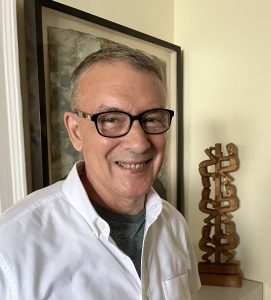
We are delighted to announce the Distinguished Scholar Session at the 111th CAA Annual Conference will honor Edward J. Sullivan. This session will highlight his career and provide an opportunity for dialogue between and among colleagues. This event will be held in-person at the New York Hilton Midtown during the 111th Annual Conference, February 16, 2022 at 4:30–6:00 pm.
Established in 2001, the Distinguished Scholar Session illuminates and celebrates the contributions of senior art historians. The Annual Conference Committee identifies a distinguished scholar each year who then invites a group of colleagues to create the session. The honoree’s involvement is fundamental to the series, which has become a tradition that gives voice to the continuities and ruptures that have shaped art-historical scholarship from the twentieth century into the new millennium.
Access to this program requires registration and is included with an All Access–level registration. Recordings will be accessible to registrants after the event. Register here.
Sullivan’s work has been transformative for the field of art history, especially in relation to the study and elevation of Latin American and Caribbean, Latina/o/x art and artists, and for the advancement of women and the BIPOC and LGBTQIA+ communities in these regions.
Edward J. Sullivan is the Helen Gould Shepard Professor in the History of Art at New York University (Institute of Fine Arts and the Department of Art History). Since receiving his PhD from NYU’s Institute of Fine Arts in 1979 (with a dissertation on painting in Madrid after the death of Velázquez) he has taught at Hunter College, Williams College, the University of Miami, and Trinity College, Dublin. However, his service as professor and administrator at New York University has been the defining aspect of his professional career. Sullivan has mentored hundreds of students at the undergraduate and graduate levels. His fields of research and teaching focus on a wide variety of geographical and temporal areas from Viceregal art in the Americas and the Philippines, to nineteenth-, twentieth-, and twenty-first-century art in Mexico, Central and South America, the United States, and the Caribbean. Sullivan has also had a parallel career as an independent curator and has worked on exhibitions in museums and cultural institutions throughout the US, Latin America, and Europe. He is the author of more than thirty books and exhibition catalogs, among which are The Language of Objects in the Art of the Americas (Yale University Press, 2007), Fragile Demon: Juan Soriano in Mexico 1935–1950 (Philadelphia Museum of Art, 2008), Continental Shifts: The Art of Edouard Duval Carrié (Haitian Cultural Institute 2008), Nueva York 1613–1945 (Scala Books, 2010), From San Juan to Paris and Back: Francisco Oller and Caribbean Art in the Era of impressionism (Yale University Press, 2014), Making the Americas Modern: Hemispheric Art 1910–1960 (Laurence King, 2018), and Brazilian Modern: The Living Art of Roberto Burle Marx (New York Botanical Garden, 2018).
The panel will include Ilona Katzew (Los Angeles County Museum of Art), Estrellita Brodsky (Another Space), Sean Nesselrode-Moncada (Rhode Island School of Design), Joseph Shaikewitz (Institute of Fine Arts), and Lynda Klich (City University of New York, Hunter College) as moderator.
Global Conversations: Materiality and Mediation
posted by CAA — September 27, 2022
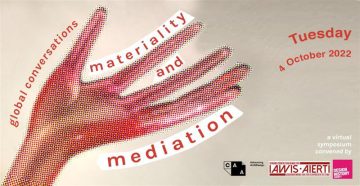
We are excited to introduce the presenters for the virtual symposium, Global Conversations: Materiality and Mediation, on October 4, 2022 from 11 am to 1 pm Eastern time. The event is organized by the College Art Association (CAA) and two of its international affiliated societies, the Design History Society and the International Association of Word and Image Studies. To register for the event, visit this page.
This global collaborative project brings together three intersecting constituencies—art and design, design history, word, and image studies—to examine how materiality and mediation intersect.
Four participating scholars will present on the following topics, followed by Q&A and discussion. The event will be recorded and shared online following the event.
This no-cost event is open to the public. Please consider donating to support no-cost programming and providing access to new and emerging scholarship.
CAA’s membership program connects you to the largest community of individuals and organizations working together and advocating to advance research, practice, and the impact of the visual arts. Visit our website for more information and to join our organization.
Questions? Email info@collegeart.org.
Interested in becoming an affiliate?
Arts organizations interested in joining CAA as an affiliated society can do so by visiting our website.
To join the Design History Society, please visit this page.
To join the International Association of Word and Image Studies, please visit this page.
Global Conversations: Materiality and Mediation
Presentations and Panelists
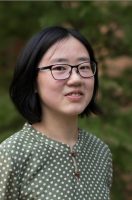
“Tavolino di gioie”: The Mediation of Material Techniques in Late Cinquecento Hardstone Inlaid Tables – Wenyi Qian, Ph.D. Candidate in Art History, University of Toronto, Toronto
Wenyi Qian is a Ph.D. candidate in early modern Italian art, with a focus on the relationship between artistic practice and knowledge culture of the period. Her dissertation examines the production of hardstone inlaid tables in late Cinquecento and Seicento Italy at the nexus of early modern craft knowledge, natural sciences, and courtly life and consumption. It aims to track technical crossovers between disparate artistic media and scales in the making of this genre of domestic furniture. She holds a BA in History of Art with Material Studies and an MA in History of Art from University College London. Prior to her doctoral research, she interned at the Museum of Fine Arts, Houston, and worked as a convenor of academic programs at OCAT Institute, Beijing. This latter experience led to her interest in the historical formation of the discipline in Europe, as well as transnational intellectual exchange around the ideas of the arts and humanities across Europe, America, and East Asia over the last century. In addition to academic research, her translation of Victor I. Stoichita’s L’Instauration du tableau: métapeinture à l’aube des temps modernes is forthcoming by the end of 2022.

Mediating the Meaning of Textiles through Exhibition Displays in Israel, 1950s-1970s – Noga Bernstein, Marie-Sklodowska Curie Visiting Researcher, Hebrew University of Jerusalem
Noga Bernstein is an art and design historian, specializing in modern craft in the United States and Israel, with a particular focus on textiles. She is currently a visiting researcher at the Hebrew University in Jerusalem. Her current research project, funded by a Marie Sklodowska-Curie Fellowship, investigates the history of textile art and design in Israel between the 1940s-1990s. She also works on a book manuscript on the US-textile design Ruth Reeves. Dr. Bernstein is a recipient of grants from the Smithsonian Institution, the American Council of American Art and the Center for Craft. She completed her PhD in art history at Stony Brook University in 2019.
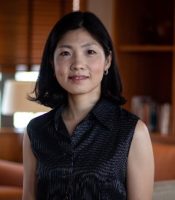

Made in Japan: Development of the Poster Medium in Japanese Commercial Art and Design – Nozomi Naoi, Associate Professor of Humanities, Yale-NUS College, Singapore
Erin Schoneveld, Associate Professor of East Asian Languages and Cultures and Director of Visual Studies, Haverford College, Haverford, Pennsylvania
Nozomi Naoi is Associate Professor of Humanities at Yale-NUS College with joint appointment at the Department of Japanese Studies, Faculty of Arts and Social Sciences at the National University of Singapore. She specializes in modern Japanese art and the media environment and is the author of Yumeji Modern: Designing the Everyday in Twentieth-Century Japan (University of Washington Press, 2020; awarded the Honorable Mention for the John Whitney Hall Prize 2022). Her current project focuses on Japanese poster design and the role of department stores, designers, and global modernism during the early twentieth century and she is currently preparing her second book manuscript titled: Modern Design and the Japanese Department Store: Visualizing the New Lifestyle. She is also co-curating an exhibition on postwar Japanese posters at the Poster House Museum in New York, opening in March 2023.
Erin Schoneveld is Associate Professor of East Asian Languages and Cultures; and Associate Professor and Director of Visual Studies at Haverford College. Schoneveld’s scholarship and teaching engages with modern and contemporary Japanese art, cinema, and visual culture. Her book Shirakaba and Japanese Modernism: Art Magazines, Artistic Collectives, and the Early Avant-garde (Brill 2019) provides a critical framework for understanding the tensions between the local and the universal that accompanied the global development of modernism. Schoneveld’s current book project Naomi Kawase and the Future of Japanese Cinema examines the role of Japanese women directors within national and world cinema cultures by evaluating Kawase’s auteur status at the intersection of film history, reception theory, gender, and identity. Schoneveld is also co-curating an exhibition on twentieth century Japanese poster art and design at the Poster House Museum in New York, opening in March 2023.
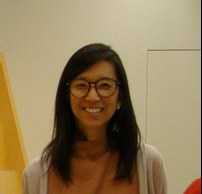

Mine Craft: Design Histories of Mining – Ellen Huang, Associate Professor of Art and Design History, ArtCenter College of Design, Pasadena, California
Arden Stern, Assistant Professor of Humanities and Sciences, ArtCenter College of Design, Pasadena, CA
Ellen Huang, Ph.D. is a historian of material culture, art, and technology at ArtCenter College of Design (Pasadena, CA, USA). In addition to teaching and research, Huang is also a curator, having organized exhibitions through universities such as the Ackland Museum of Art (UNC Chapel Hill), University of San Francisco and the Cantor Arts Center at Stanford University, as well as for civic museums. Huang is finishing a manuscript about Jingdezhen porcelain as material design in late-imperial Chinese and global history. Huang has contributed to publications for museums, journalistic forums, and academic journals, including Archives of Asian Art, Journal of World History, Art&Object, Jewels in Buddhist Imaginaries (University of Hawai’i Press), the National Museum of Korea Research Series, and Oxford Bibliographies.
Arden Stern, Ph.D. is a design historian whose scholarship focuses on the intersecting histories of US labor, graphic design, and visual culture. They are currently an Assistant Professor of Humanities & Sciences at ArtCenter College of Design (Pasadena, CA, USA), also teaching in the Media Design Practices program, and have served as Visiting Faculty in the Department of Anthropology at Wayne State University. They have contributed to various scholarly and journalistic publications, including the Design & Culture journal, Design Issues, and Print magazine, and are currently working on a manuscript that analyzes labor and class histories of graphic design in the United States from the late nineteenth century through the present.
CAA 50th Anniversary of Feminism + Art
posted by CAA — September 19, 2022
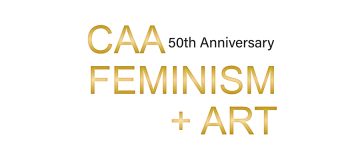
CAA has engaged in a yearlong 50th anniversary celebration of feminism and art, culminating in a program and reception at Boston University’s Joan and Edgar Booth Theatre at 4 p.m. ET on Friday, September 23, 2022. This program will reflect on the incredible history of feminist pioneers at the organization while looking toward a more inclusive, equitable future. Along with the Women’s Caucus for Art and The Feminist Art Project, CAA is committed to ensuring our crucial work continues during this moment of precarity for women’s rights.
To expand national and global reach, CAA is partnering with ArtTable, along with Women & Their Work (Austin, TX) and Pen + Brush (NYC) who will serve as satellite locations for the 90-minute Boston program. We hope to introduce a new generation to the intersection of art and feminism at CAA and beyond.
To RSVP for the Boston program and reception, please contact development@collegeart.org.
To RSVP for the livestream of the Boston program, please visit caafeminism50.eventbrite.co.uk.
If you are unable to attend but would like to contribute to the 50th Anniversary of Feminism Honorary Fund to ensure this vital work continues at CAA, please visit collegeart.org/donate.
HOSTS
Meme Omogbai, CAA Executive Director & CEO
Jennifer Rissler, CAA President
CAA Board of Directors
HONORARY COMMITTEE
Lynne D. Allen
Laura Anderson Barbata
Charlene Villaseñor Black
Judith K. Brodsky
Scherezade García-Vázquez
Joanna Gardner-Hugget
Laura Hall
Ann Sutherland Harris
Margo Hobbs
Donna Jackson
Denali Kemper
Leslie King-Hammond
Laura Morrison
Denise Mullen
Ferris Olin
N. Elizabeth Schlatter
Lowery Stokes Sims
Anne Swartz
Connie Tell
Freida High Wasikhongo Tesfagiorgis
Susan Unterberg
PARTNERS
ArtTable
The Feminist Art Project
Pen + Brush
Women & Their Work
Women’s Caucus for Art
Distinguished Awardees: Zahira Véliz Bomford and Fred Hagstrom
posted by CAA — August 18, 2022
Every year at its Annual Conference in February, CAA gives its prestigious Distinguished Awards to professionals in the visual arts. With these annual awards, CAA seeks to honor individual artists, art historians, authors, curators, and critics whose accomplishments transcend their individual disciplines and contribute to the profession as a whole and to the world at large. We share a closer look at the careers of two individuals who received Distinguished Awards, Zahira Véliz Bomford and Fred Hagstrom.
Watch this video to learn more about Zahira Véliz Bomford, who received CAA’s 2022 CAA/American Institute for Conservation Award for Distinction in Scholarship and Conservation, and her career as an art conservator and art historian. The CAA/American Institute for Conservation Award for Distinction in Scholarship and Conservation recognizes outstanding contributions by one or more persons who, individually or jointly, have enhanced understanding of art through the application of knowledge and experience in conservation, art history, and art. The joint award with AIC was first presented in 2016. Between 1991 and 2015, the award was known as the “CAA/Heritage Preservation Award for Distinction in Scholarship and Conservation.”
This video looks at the career of Fred Hagstrom, recipient of CAA’s 2022 Distinguished Teaching of Art award. The Distinguished Teaching of Art Award, established in 1972, is presented to an individual who has been actively engaged in teaching art for most of their career. This award is presented to an artist of distinction who has developed a philosophy or technique of instruction based on their experience as an artist; has encouraged their students to develop their own individual abilities; and/or has made some contribution to the body of knowledge loosely called theory and understood as embracing technical, material, aesthetic, and perceptual issues.
Do you know a colleague or a mentor who deserves recognition for their work? Nominate someone today who you feel should be honored for their work in the field.
CAA’s Distinguished Awards to individuals include the following areas:
- Distinguished Teaching of Art Award
- Distinguished Teaching of Art History Award
- Artist Award for Distinguished Body of Work
- Distinguished Artist Award for Lifetime Achievement
- Distinguished Lifetime Achievement Award for Writing on Art
- Distinguished Feminist Awards
- CAA/American Institute for Conservation Award for Distinction In Scholarship and Conservation Award
- Excellence in Diversity Award
All nominations are due September 1.
CAA’s Committee on Women in the Arts, Archival Recordings from the 1994 Annual Conference
posted by CAA — August 18, 2022
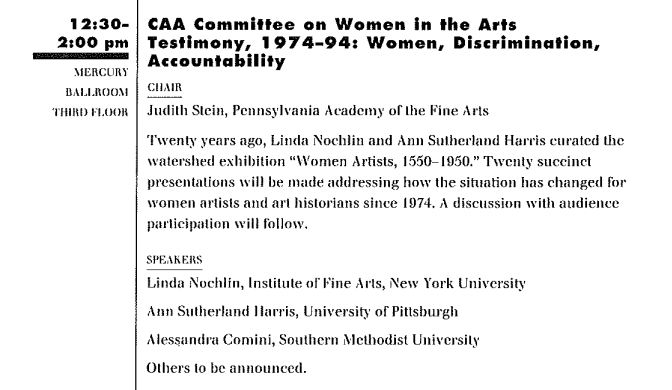
Entry in 1994 Annual Conference program of the Committee on Women in the Arts’ session.
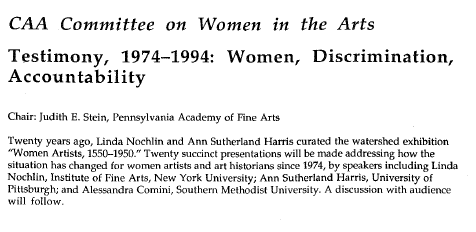
Abstract entry of the Committee on Women in the Arts session in the 1994 Annual Conference abstracts program.
Fifty years ago in 1972, CAA founded its first committees devoted to women in the arts. This year we celebrate the 50th anniversary of this history by sharing historic materials from CAA members and archives that intersect with feminism at the organization, CAA’s Committee on Women in the Arts, and from its Affiliated Societies, the Women’s Caucus for Art (WCA) and The Feminist Art Project (TFAP). CAA established the Committee on the Status of Women (COSW), the first committee to focus on women in CAA’s history, in 1972. The COSW was renamed the Committee on Women in the Arts (CWA) in 1996, and it continues to promote women in the visual arts field.
In 1994, CAA’s Committee on Women in the Arts held a panel chaired by Judith Stein that featured speakers Linda Nochlin, Ann Sutherland Harris, and Alessandra Comini. Their individual presentations look at the progress of women artists and art historians over the previous twenty years, since 1974. The talks use the exhibition, Women Artists 1550-1950, curated by Nochlin and Harris, as a benchmark for discussion. This landmark exhibition toured four American museums in 1976-77, such as the Brooklyn Museum in 1977, and raised public awareness of the many gifted women painters, sculptors, and architects.
The talks in this session compare and contrast the attitudes that prevailed when the show was being organized with views in the nineties. Releasing these recordings of the session almost another twenty years later, it is an opportunity to reassess the status of women in the arts once again.
Biographies of the speakers:
Judith E. Stein chaired CAA’s Committee on Women in the Arts from 1992 to 1997, initiating a series of awards to women in the arts. A writer and curator, Stein studied at Barnard College, and has a Ph.D. in art history from the University of Pennsylvania.
Stein was recently awarded the Lifetime Achievement Award by the Women’s Caucus for Art (WCA) in 2020. She has written at length on feminism and women artists, beginning with her 1981 doctoral thesis on the neoclassic iconography of Sappho, one of the first feminist dissertations in art history at the University of Pennsylvania. She helped organize Philadelphia Focuses on Women in the Visual Arts (FOCUS) in 1973-74 and edited the WCA’s newsletter from 1975 to 1977. She was also a member of the WCA national advisory board from 1979 to 1981. Her first piece of art criticism was published in Art in America in 1974, reviewing a Judy Chicago exhibition. She also wrote on Cecilia Beaux, the first woman to teach at the Pennsylvania Academy of the Fine Arts, Feminist Art Journal, Winter (1975–1976). Her work has also appeared in Art News, The New York Times Book Review, and the National Public Radio’s Fresh Air and Morning Edition.
Stein served on the advisory board of Philadelphia’s Leeway Foundation for women artists, (1994–2002) and was the first curator of Leeway Founder Linda Alter’s collection of art by American women artists. Stein wrote the foundational essay for Making Their Mark: Women Artists Move into the Mainstream, 1970–1985 (Abbeville, 1989) and “Collaboration,” for The Power of Feminist Art (Harry N. Abrams, 1994). She curated The Likeness of Being: Contemporary Self-Portraits by Sixty Women (DC Moore Gallery, New York, 2000), and co-curated Picturing the Modern Amazon: The Hypermuscular Woman (The New Museum of Contemporary Art, New York, 2000).
She is the author of Eye of the Sixties, Richard Bellamy and the Transformation of Modern Art, (Farrar, Straus & Giroux, 2016). Other curatorial projects by Stein include Red Grooms, A Retrospective for the Pennsylvania Academy of the Fine Arts, and I Tell My Heart: The Art of Horace Pippin, which traveled to the Metropolitan Museum of Art in 1995 and earned a best catalogue award from AICA/USA.
Among her honors is a Creative Capital/Andy Warhol Foundation Arts Writers Grant; a Pew Fellowship for literary non-fiction; and a Lannan Foundation writing residency in Marfa, Texas. Learn more about Judith Stein’s career on her webpage and in this WCA announcement.
Alessandra Comini is University Distinguished Professor of Art History Emerita at Southern Methodist University in Dallas, Texas. She received her B. A. degree from Barnard College, her M. A. from the University of California at Berkeley, and her Ph.D. “with distinction” from Columbia University where she taught for ten years. She has also taught at the University of California, Berkeley, Yale University, served as the Alfred Hodder Resident Humanist at Princeton University, and was named Distinguished Visiting Lecturer at Oxford University‘s European Humanities Research Centre (1996). Voted “outstanding professor” by her students sixteen times, she has been extended the Distinguished Teaching Prize of the Meadows School of the Arts and the United Methodist Church Scholar/Teacher of the Year Award (1996).
An undergraduate and a graduate scholarship in Comini’s name have been established by former students, one a professor of surgical oncology in Little Rock, Arkansas; the other, founder and co-owner of an international antiques business in Dallas. The author of major essays and eight books, one of them nominated for the National Book Award (see publications), Dr. Comini was awarded the Grand Decoration of Honor by the Republic of Austria in recognition of her contributions to Germanic culture in 1990. Her lively revisionist work in the history of women artists was acknowledged in 1995 by the Women’s Caucus for Art with the coveted Lifetime Achievement Award. A vibrant lecturer in both English and German, she is in great demand in America and abroad as a speaker in her chosen fields of art and cultural history as well as musical iconography (see lectures)…. (Source: https://www.alessandracomini.com/introduction/)
Ann Sutherland Harris was born in Cambridge, England and was educated in both the USA and the UK (BA 1961 & PhD 1965, University of London at the Courtauld Institute of Art). She has lived in the States since 1965, teaching at Barnard College and Columbia University, and at several other universities before joining the faculty of the University of Pittsburgh as Professor of the History of Art and Architecture in 1984. There she taught a variety of courses to under- graduate and graduate students. She retired from teaching in 2012.
Harris’s research focuses mainly on 17th century Europe, especially painters and sculptors working in Italy and France. She has a particular interest in artists’ drawings and what they reveal about artists’ ideas and intentions, as well as in artists’ self-perceptions and the roles they play as they interact with patrons and their demands. She has published books about Andrea Sacchi and Gian Lorenzo Bernini’s drawings and, most recently, a substantial survey of European 17th century art and architecture (Laurence King, London; 2005; 2nd ed. 2008). A full bibliography of her publications is available on her university’s website.
Harris became interested in the past and present situation of women during the late 1960s and 1970s, when she became an activist for improved status for women in academe. She testified before the US Congress in 1970 about the discrimination faced by women in higher education, and then helped to set up the Women’s Caucus for Art, an advocacy organization for women active as artists, art historians, and museum professionals: she was its first President (1972-74). She also encouraged Wilhelmina Holladay to found a museum devoted to women artists, which she did twenty-five years ago: the National Museum for Women in the Arts in Washington, DC.
Art history and activism came together when Harris and Linda Nochlin co-curated the traveling exhibition Women Artists, 1550-1950 for the Los Angeles County Museum in 1976-7 (also shown at the University Art Museum, Austin, Texas; the Carnegie Museum of Art, Pittsburgh; and the Brooklyn Museum, New York). She was responsible for artists active in the 16th to 18th centuries, and Nochlin for the artists working after 1800, and she contributed most of the catalogue entries for the earlier artists as well as an introduction that provided the essential historical background for the pioneering women artists who emerged in Europe in the mid-sixteenth-century. Since then, she has occasionally written about twentieth-century women, including Alice Neel (1900-84), Elizabeth Murray (1940-2006) and Edna Andrade (1917- 2008), as well as contributing catalogue essays, articles and reviews about Artemisia Gentileschi and Sofonisba Anguissola, and a survey of recent scholarship on Sofonisba, Artemisia, Lavinia Fontana and Elisabetta Sirani for the exhibition, Italian Women Artists from the Renaissance to the Baroque held at the women’s museum in Washington in 2007.
Linda Nochlin was an American feminist art historian most well-known for her 1971 article “Why Have There Been No Great Women Artists?,” which widely influenced art history, leading to new research and awareness of history and how it is written, analyzed, and taught, as well as launching the field of feminist art history.
Nochlin graduated from Vassar College in 1951 with a bachelor’s degree in philosophy and earned a master’s degree in English from Columbia University in 1952. Her doctorate in art history from the Institution of Fine Arts at New York University (NYU) focused on realism and Gustave Courbet. From 1952 to 1979, Nochlin taught art history at Vassar and published two books on 19th-century art in 1966, Realism and Tradition in Art, 1848–1900 and Impressionism and Post-Impressionism, 1874–1904. She shifted her focus to feminism in 1969, when she taught one of Vassar’s first art history courses on women, “The Image of Women in the Nineteenth and Twentieth Centuries.” After her landmark article, in 1976 Nochlin co-curated “Women Artists: 1550–1950” with Anne Sutherland Harris.
Nochlin left Vassar for a professorship at the graduate school at the City University of New York, where she stayed from 1980 until 1990. In the eighties she published more on Courbet, such as Courbet Reconsidered (1988) with Sarah Faunce, which was also an exhibition at the Brooklyn Museum. Nochlin also published Women, Art, and Power, and Other Essays (1988) and The Politics of Vision: Essays on Nineteenth-Century Art and Society (1989). Nochlin than taught at Yale University (1990-1992) and then became a professor at NYU.
During this time, she published Women in the 19th Century: Categories and Contradictions (1997), Representing Women (1999), and Bathers, Bodies, Beauty: The Visceral Eye (2006).
In 1972, CAA founded its first committees devoted to women in the arts. As a part of this yearlong 50th anniversary celebration, we are sharing historic materials from CAA members and archives that intersect with feminism at the organization, including CAA’s Committee on Women in the Arts (CWA) and our Affiliated Societies, Women’s Caucus for Art (WCA) and The Feminist Art Project (TFAP).
This celebration culminates in a program and reception at Boston University’s Joan and Edgar Booth Theatre on Friday, September 23, 2022. This program will reflect upon the incredible history of feminist pioneers at the organization while looking toward a more inclusive, equitable future through the continued work of the CWA. The members of CWA are carrying the torch of feminism during this crucial time of precarity for women’s rights.
Over the next couple months, visit this site (CAA News) and our social media pages to explore more about this history and items from our archives.
CAA’s Committee on Women in the Arts Annual Recognition Award, 2006
posted by CAA — August 18, 2022
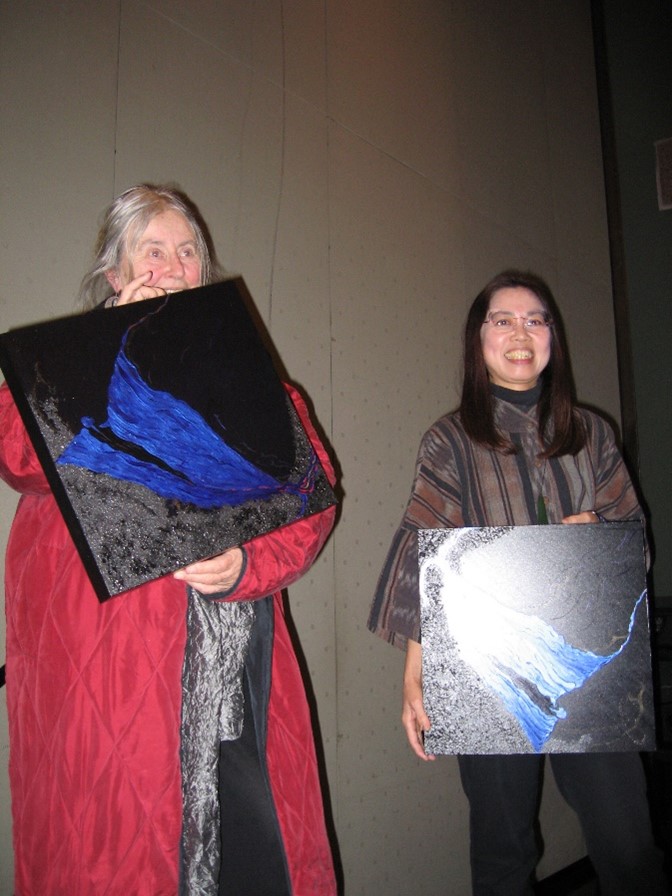
Photo of the 2006 CWA Award recipients, Moira Roth and Trinh T. Minh-ha holding paintings
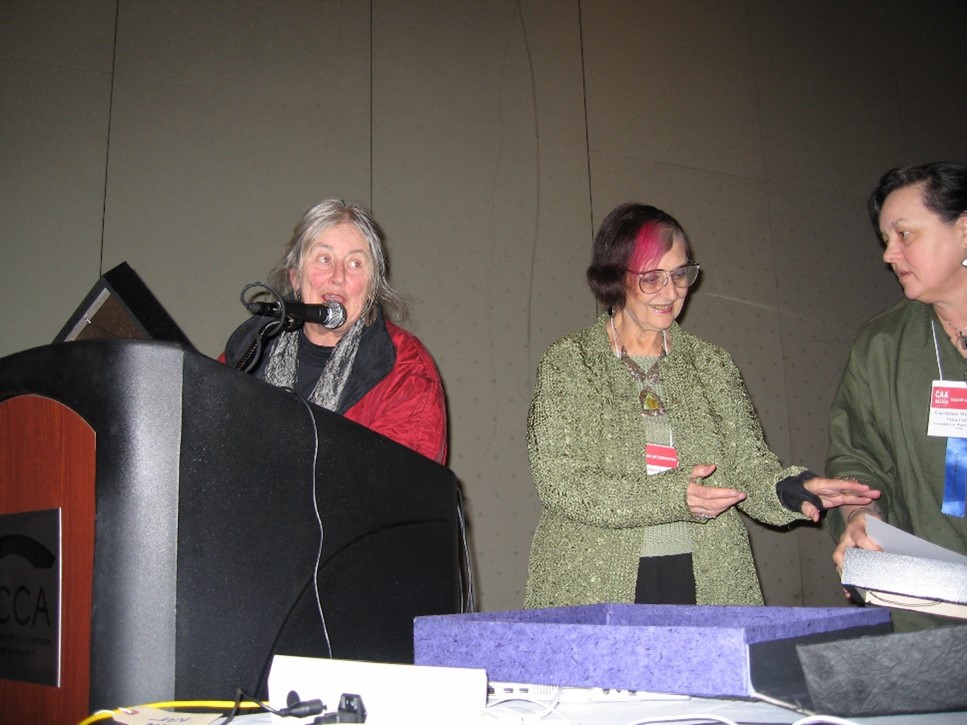
Moira (left) talking at the podium while Eleanor Dickinson (middle), then chair of CWA getting ready with the award gift created by Carolyne Manosevitz
In 2006, during the CAA Annual Conference in Boston, the Committee on Women in the Arts (CWA) honored Moira Roth (Trefethen Professor of Art History at Mills College in Oakland, CA) and Trinh T. Minh-ha (Professor of Women’s Studies and Rhetoric/Film at the University of California at Berkeley) with the CWA Annual Recognition Awards. Then CWA member, Carolyne Manosevitz, offered her own paintings as the award gifts. Roth, who recently passed away, was one of the first scholars to publish on feminist performance art. Her books, The Amazing Decade: Women in Performance Art in America (1983)and Rachel Rosenthal (1995), were groundbreaking. Minh-Ha is a Vietnam-born filmmaker, writer, and composer, whose practice is positioned within the fields of feminist and post-colonial studies.
After 2008, this award became a part of CAA’s Distinguished Awards program as the Distinguished Feminist Awards. The Distinguished Feminist Award is presented annually to a visual artist or designer who, through outstanding efforts in their practice or advocacy, has advanced the cause of equality for women in the arts; as well as a scholar who, through outstanding efforts in their scholarship, curatorial practice, or advocacy, has advanced the cause of equality for women in the arts. Read more about this award and its recipients here.
Post by Midori Yoshimoto
Midori Yoshimoto is associate professor of art history and gallery director at New Jersey City University. Yoshimoto specializes in post-1945 Japanese art and its diaspora with a focus on women artists, Fluxus, and intermedia. Her 2005 book, Into Performance: Japanese Women Artists in New York, led to numerous publications including an essay in Yoko Ono One Woman Show (Museum of Modern Art, New York, 2015). Yoshimoto co-curated a major survey exhibition of Japanese American artist Shigeko Kubota, which traveled three museums in Japan in 2021-22. Its catalog, Viva Video! The Art and Life of Shigeko Kubota was published by Kawade Shobo Shinsha and received the Ringa Art Encouragement Award in Japan. She is also a co-editor and author of a recent publication, Women, Aging, and Art: A Crosscultural Anthology (Bloomsbury, 2021).
In 1972, CAA founded its first committees devoted to women in the arts. As a part of this yearlong 50th anniversary celebration, we are sharing historic materials from CAA members and archives that intersect with feminism at the organization, including CAA’s Committee on Women in the Arts (CWA) and our Affiliated Societies, Women’s Caucus for Art (WCA) and The Feminist Art Project (TFAP).
This celebration culminates in a program and reception at Boston University’s Joan and Edgar Booth Theatre on Friday, September 23, 2022. This program will reflect upon the incredible history of feminist pioneers at the organization while looking toward a more inclusive, equitable future through the continued work of the CWA. The members of CWA are carrying the torch of feminism during this crucial time of precarity for women’s rights.
Over the next couple months, visit this site (CAA News) and our social media pages to explore more about this history and items from our archives.
Countering Feminist Indifference: Notes from the Women’s Caucus for Art
posted by CAA — August 15, 2022
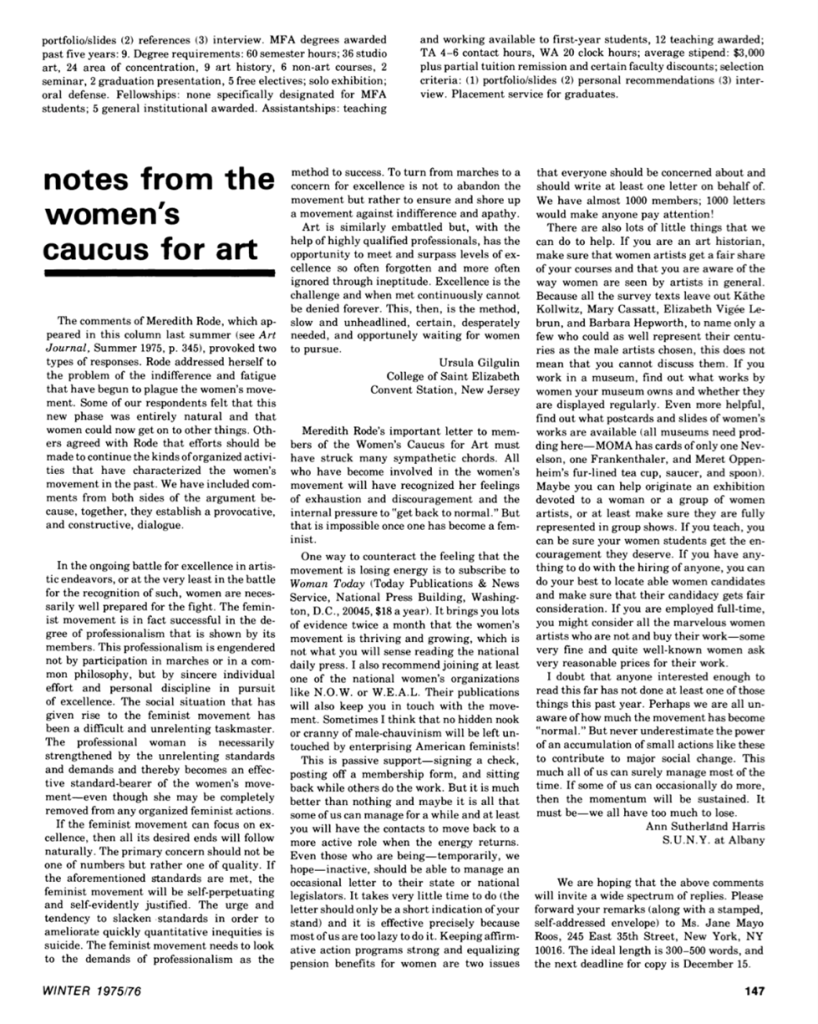
See full text reproduced below. Article also available on Jstor.
“Notes from the Women’s Caucus for Art (WCA),” a column featured in Art Journal during the 1970s, created an important forum for critical debates in the feminist art movement. In Summer 1975, for example, Meredith Rode shared evidence of fatigue with the feminist struggle in her letter “The High Price of Indifference.” Rode’s letter generated numerous responses in the winter 1975 issue, including Ann Sutherland Harris’s practical advice on how to counter this exhaustion.
The first President of WCA advocated both passive and activist gestures, ranging from sending a check to the National Organization of Women to pressuring local museums to display works by women in their collections, organizing group shows of women artists, mentoring female students, and buying women’s art.
This snapshot of WCA’s essential role in feminism art and activism reminds us how we can individually act to demand equity while working in conjunction with the collective efforts of essential national organizations, such as WCA and CAA. Read the full text below.
Post by Joanna Gardner-Huggett
Sources:
- Meredith Rode, “Notes from the Women’s Caucus for Art: The High Price of Indifference,” Art Journal (Summer 1975): 345.
- Ann Sutherland Harris, “Notes from the Women’s Caucus for Art,” Art Journal (Winter 1975/76): 147.
Biography of post author: Joanna Gardner-Huggett is an Associate Professor of History of Art and Architecture at DePaul University and Chair of the Committee on Women in the Arts. She teaches courses on twentieth-century art and feminist theory, while her research focuses on the intersection between feminist collaboration and arts activism and has been published in numerous journals and anthologies. Joanna’s most recent scholarship explores the history of the Chicago based women artists’ collectives Artemisia Gallery in Chicago (1973-2003), ARC Gallery (1973-present), and Sapphire and Crystals (1987-present).
FULL TEXT (from image): Ann Sutherland Harris, “Notes from the Women’s Caucus for Art,” Art Journal (Winter 1975/76): 147.
The comments of Meredith Rode, which appeared in this column last summer (see Art Journal, Summer 1975, p. 345), provoked two types of responses. Rode addressed herself to the problem of the indifference and fatigue that have begun to plague the women’s movement. Some of our respondents felt that this new phase was entirely natural and that women could now get on to other things. Other agreed with Rode that efforts should be made to continue the kinds of organized activities that have characterized the women’s movement in the past. We have included comments from both sides of the argument because, together, they establish a provocative, and constructive, dialogue.
In the going battle for excellence in artistic endeavors, or at the very least in the battle for the recognition of such, women are necessarily well prepared for the fight. The feminist movement is in fact successful in the degree of professionalism that is shown by its members. This professionalism is engendered not by participation in marches or in a common philosophy, but by sincere individual effort and personal discipline in pursuit of excellence. The social situation that has given rise to the feminist movement has been a difficult and unrelenting taskmaster. The professional woman is necessarily strengthened by the unrelenting standards and demands and thereby becomes an effective standard-bearer of the women’s movement—even though she may be completely remove from any organized feminist actions.
If the feminist movement can focus on excellence, then all its desire ends will follow naturally. The primary concern should not be one of the numbers but rather one of quality. If the aforementioned standards are met, the feminist movement will be self-perpetuating and self-evidently justified. The urge and tendency to slacken standards in order to ameliorate quickly quantitative inequities is suicide. The feminist movement needs to look to the demands of professionalism as the method to success. To turn from marches to a concern for excellence is not to abandon the movement but rather to ensure and shore up a movement against indifference and apathy.
Art is similarly embattled but, with the help of highly qualified professionals, has the opportunity to meet and surpass levels of excellence so often forgotten and more often ignored through ineptitude. Excellence is the challenge and when met continuously cannot be denied forever. This, then, is the method, slow and unheadlined, certain, desperately needed, and opportunely waiting for women to pursue.
Ursela Gilgulin, College of Saint Elizabeth, Convent Station, New Jersey
Meredith Rode’s important letter to members of the Women’s Caucus for Art must have struck many sympathetic chords. All who have become involved in the women’s movement will have recognized her feelings of exhaustion and discouragement and the internal pressure to “get back to normal.” But that is impossible once one has become a feminist.
One way to counteract the feeling that the movement is losing energy is to subscribe to Women Today. It brings you lots of evidence twice a month that the women’s movement is thriving and growing, which is not what you will sense reading the national daily press. I also recommend joining at least one of the national women’s organizations like N.O.W. or W.E.A.L. Their publications will also keep you in touch with the movement. Sometimes I think that no hidden nook or cranny of male-chauvinism will be left untouched by enterprising American feminists!
This is pass support—signing a check, posting off a membership form, and sitting back while others do the work. But it is much better than nothing and maybe it is all that some of us can manage for a while and at least you will have the contacts to move back to a more active role when the energy returns. Even those who are being—temporarily, we hope—in active, should be able to manage an occasional letter to their state or national legislators. It takes very little time to do (the letter should only be a short indication of your stand) and it is effective precisely because most of us are too lazy to do it. Keeping affirmative action programs strong and equalizing pension benefits for women are two issues that everyone should be concerned about and should write at least one letter on behalf of. We have almost 1000 members; 1000 letters would make anyone pay attention!
There are also lots of little things that we can do to help. If you are an art historian, make sure that women artists get a fair share of your courses and that you are aware of the way women are seen by artists in general. Because all the survey texts leave out Käthe Kollwitz, Mary Cassatt, Élisabeth Louise Vigée Le Brun, and Barbara Hepworth, to name only a few who could as well represent their centuries as the male artists chosen, this does not mean that you cannot discuss them. If you work in a museum, find out what works by women your museum owns and whether they are displayed regularly. Even more helpful, find out what postcards and slides of women’s works are available (all museums need prodding here—MOMA has cards of only one Nevelson, one Frankenthaler, and Meret Oppenheim’s fur-lined tea cup, saucer, and spoon). Maybe you can help originate an exhibition devoted to a woman or a group of women artists, or at least make sure they are fully represented in group shows. If you teach, you can be sure your women students get the encouragement they deserve. If you have anything to do with the hiring of anyone, you can do your best to locate able women candidates and makes sure that their candidacy gets fair consideration. If you are employed full-time, you might consider all the marvelous women artists who are not and buy their work—some very fine and quite well-known women ask very reasonable prices for their work.
I doubt that anyone interested enough to read this far has not done at least one of these things this past year. Perhaps we are all unaware of how much the movement has become “normal.” But never underestimate the power of an accumulation of small actions like these to contribute to major social change. This much all of us can surely manage most of the time. If some of us can occasionally do more, then the momentum will be sustained. It must be—we all have too much to lose.
Ann Sutherland Harris, S.U.N.Y at Albany
In 1972, CAA founded its first committees devoted to women in the arts. As a part of this yearlong 50th anniversary celebration, we are sharing historic materials from CAA members and archives that intersect with feminism at the organization, including CAA’s Committee on Women in the Arts (CWA) and our Affiliated Societies, Women’s Caucus for Art (WCA) and The Feminist Art Project (TFAP).
This celebration culminates in a program and reception at Boston University’s Joan and Edgar Booth Theatre on Friday, September 23, 2022. This program will reflect upon the incredible history of feminist pioneers at the organization while looking toward a more inclusive, equitable future through the continued work of the CWA. The members of CWA are carrying the torch of feminism during this crucial time of precarity for women’s rights.
Over the next couple months, visit this site (CAA News) and our social media pages to explore more about this history and items from our archives.



